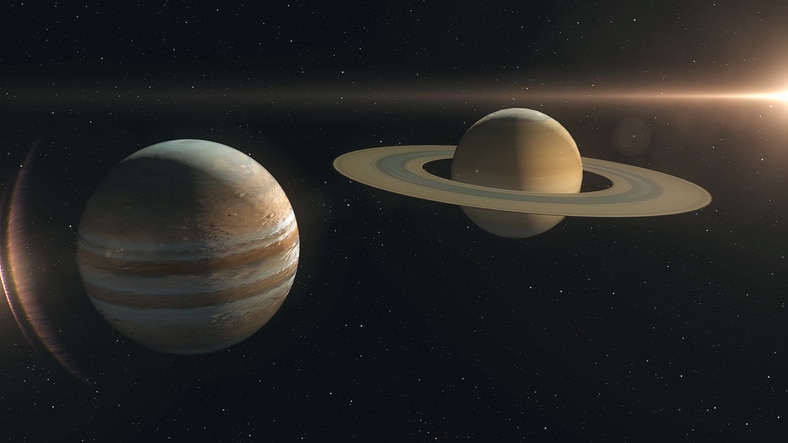Canberra skywatchers are readying their telescopes for an event that last took place in the Middle Ages: the Great Conjunction of Jupiter and Saturn.
For the last couple of weeks, the gas giants have gradually been drawing closer, speedy Jupiter with its 11.9-year orbit around the Sun overtaking sluggish Saturn (a leisurely 29.5 years). The culmination will be on Monday night, 21 December, when the gas giants will be 0.1 degrees apart (a mere 665 million or so kilometres).
Although the Great Conjunction occurs roughly every 20 years, the last time the planets came so close to the Earth was in 1623 – but nobody saw it. The last time the conjunction was observable at night was in 1226 – when Europeans still believed the sun and stars orbited the Earth.
“This isn’t something that you know will happen in a year or two,” ANU astrophysicist / cosmologist Dr Brad Tucker said. “It really is waiting decades or centuries to see this. When we talk about planets moving around our solar system, very rarely do we get to see it with our own eyes. We’re seeing our solar system in action.”
To observers on Earth, the planets will appear almost as the same object, Dr Tucker explained.
“It will look like a really weird star, or a star that’s off. There won’t quite be two separate points of light; there won’t be one single point of light; it will be an oblong, almost like car headlights off in the far distance.”
You will be able to see the event with your naked eye, Dr Tucker said. With a pair of binoculars, you will be able to see the moons of Jupiter and the rings of Saturn in the same view.
The Conjunction will be visible around 9pm. Sunset is at 8.45; the planets will appear 15 to 20 minutes later, and remain visible for the next hour (cloud cover permitting).
To see the Great Conjunction, look towards the western horizon, where the sun is setting. Jupiter and Saturn will look like two bright stars that do not twinkle. The best spots are from the western sides of the city, with unobstructed views.
Although there will be gorgeous views from Mt Ainslie and Black Mountain, Dr Tucker advised, you don’t need to be in a dark area; you should be able to see it from your neighbourhood nature strip or oval, or even from your own home.
Dr Tucker will try to livestream the view from the Mount Stromlo Observatory telescope on Facebook.
Jupiter and Saturn will remain visible for the next fortnight, but grow further apart.
The Great Conjunction will next be observable from the Earth in 2080.
“If you’re in it for the long haul, you may get to see it twice – but it’s definitely not one to miss,” Dr Tucker said.
This year’s Great Conjunction is also taking place on our summer solstice: the longest day and shortest night of the year. Close to Christmas, too, some have speculated that the event could be the inspiration for the Star of Bethlehem story. Dr Tucker thinks this unlikely.
“But it is a special ‘star’ for us near Christmas,” he said. “It’s our special 2020 event. And maybe that’s the way we should think about it: a special way space is sending us off after this year we want to forget.”
For more news:
- New drug from ANU combats sepsis, set to save millions of lives
- Men’s Sheds help with ‘second wave’ of bushfire recovery
- Golf club creeps closer to closure due to price hike, points to election promise
- Shoplifting in the ACT fell 25% in 2020; can we keep it that way?
- Castley demands answers over Gungahlin Pool closure



